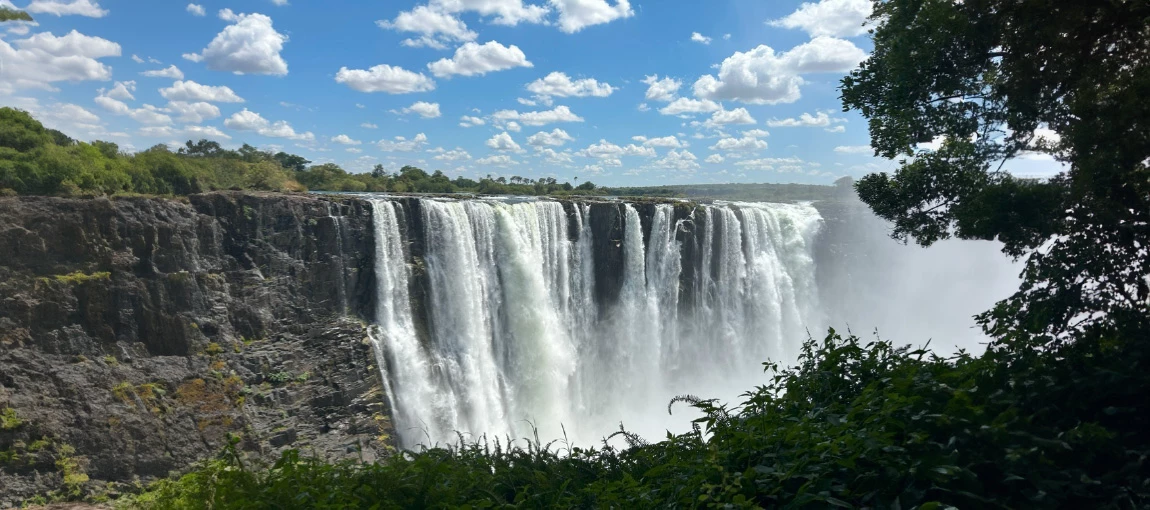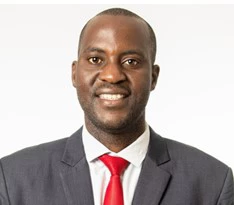 Victoria Falls. Photo: Albert Pijuan / World Bank
Victoria Falls. Photo: Albert Pijuan / World Bank
Balancing environmental quality and economic progress has always been a key challenge for policymakers in Sub-Saharan Africa and around the world. While the two objectives may sometimes be at odds, there are also opportunities. The first of a series of "Africa East Growth Talks” delved into the opportunities from both theoretical and practical perspectives, considering climate change-driven headwinds in the case of Zambia.
The World Bank-hosted series aims to promote policy discussions between policymakers, academics, and practitioners on avenues to promote sustained and inclusive growth in the East African subregion. These remote conversations feature discussions on policy to help countries identify critical constraints to economic growth and share experiences on overcoming them.
Sub-Saharan Africa’s future economic development will likely be intertwined with its ability to integrate green growth strategies into national development agendas, so we are sharing some insights from the discussion in this blog.
What does it mean to grow by protecting the environment in SSA?
Balancing environmental quality and economic progress is a key challenge facing policymakers in SSA economies. Many countries on the continent are keen to get on a rapid growth path to create jobs and a dynamic middle class by maximizing low-carbon growth and opportunities offered by the global energy transition. Yet, it is tougher for low- and lower-middle-income countries to trade off economic development for environmental protection when fiscal space is narrow and people lack basic needs. During the discussion, Professor Seema Jayachandran, Professor of Economics and Public Affairs at Princeton University, rightly flagged "Weaker government capacity and fiscal space in developing economies make it more difficult to enact effective policies to protect the environment and compensate people who are economically hurt by environmental policies. Building state capacity to pursue economic and environmental policies efficiently is crucial because the tradeoffs create a headwind.”
At the same time, SSA countries host substantial deposits of copper, cobalt, manganese, nickel, and rare earths that promise to spearhead the world’s decarbonization of energy production and use as energy transition minerals. If these minerals are developed sustainably while protecting the environment, within a robust strategy for realizing wider benefits and industrial diversification, countries can leverage their resource wealth to underpin durable economic growth and transformative development for the continent. Similarly, enhancing productivity and building resilience in the agriculture sector while protecting and leveraging other critical resources, such as forests and water, is essential. For this, cash-constrained governments must build capacities to regulate key economic sectors and related resources effectively while mobilizing climate financing. In Zambia, we see two critical avenues to maximize environment-friendly economic growth.
Zambia has vast natural resource endowments, and the environment—development tradeoffs can be balanced with sustained economic growth.
First, Zambia can leverage energy transition minerals and other natural resources for its development alongside strengthening its environmental legislation, institutions, and enforcement. Zambia has substantial untapped natural wealth with great value-addition prospects. The country has vast amounts of energy transition minerals, including one of the highest-grade copper deposits globally and two percent of the global share of copper reserves. It also holds deposits of cobalt, nickel, and manganese.
In the past, mining was not always environmentally conscious. One of the most polluted places in Africa is Kabwe, a town in Zambia’s Central Province, where a former lead and zinc mine left behind dangerous contamination. The mine was first owned by private companies, either directly or indirectly, then taken over by the state and shut down in 1994. But no one ever cleared away the mine’s poisonous waste. As Minister Situmbeko Musokotwane put it during the discussion, “We must develop our energy transition minerals potential in a way that adds value. Discussing environmental issues must become a standard practice when negotiating with mining companies, especially Greenfield. We need to guide companies' behaviors regarding environmental issues as much as possible, and setting up environmental standards is part and parcel of the sector.”
 High-purity copper ore from Zambia. Photo: iStock by Getty Images (wingedwolf)
High-purity copper ore from Zambia. Photo: iStock by Getty Images (wingedwolf)
As the country aims to harness its valuable mineral resources to boost economic growth and ensure a more equitable distribution of benefits among its citizens, balancing environmental protection is essential. The Zambian government is taking active steps to leverage the potential of critical minerals, including enhancing regulatory oversight and encouraging sustainable practices. Zambia is set to establish the first-ever independent Minerals Regulation Commission, which is expected to work closely with the Zambia Environmental Management Agency under the Ministry of Green Economy and Environment. Besides these developments, it will be vital to strengthen mine closure issues—providing financial sureties for closures—as well as to build the environment management agency’s capacity to review and approve mine environmental impact assessments and management plans and their supervision.
Zambia must also address growing deforestation rates, enhance the forest economy, and increase agricultural productivity to harness the economic potential of vast natural endowments. The devastating effects of the current drought underscore the need for more productive and climate-resilient agriculture. Reforms of agricultural input subsidies are promising and should incentivize private sector investment, increase productivity, and favor diversification. Financing for expanded irrigation is a priority, and blended financing packages and aggregation models may help to commercialize promising pilots. Additionally, a clean and reliable energy sector is critical to drive green growth. While Zambia has significant renewable energy potential, an over-reliance on hydropower, dwindling water sources, and projected growth in mining and other industries could lead to increased emissions from fossil fuels. Therefore, providing incentives and an enabling environment for scaling up renewable energy is essential, particularly in rural areas. Integrating sustainable forest management and reforestation initiatives can contribute to a greener economy, create jobs, and provide alternative energy sources, such as biomass, which can reduce the pressure on hydropower and help mitigate climate change.
Second, maximizing the strategic use of climate finance and carbon markets will be key. It is estimated that achieving Zambia’s green growth ambitions and Nationally Determined Contribution commitments under the Paris Agreement will cost over $17 billion through 2030. At the same time, prudent fiscal management is crucial, given debt distress and macro-fiscal constraints. Within this context, the authorities should optimize public spending efficiency—reforming subsidies, enhancing domestic resource mobilization, and mainstreaming climate resilience in budgeting and public investment processes —while mobilizing and greening private finance flows. The new green loan guidelines and forthcoming green finance framework are already seeking to direct private capital to green growth priority sectors and projects.
In the near term, beyond concessional financing, the authorities’ access to international markets to finance huge developmental needs is constrained. The country should continue exploring innovative instruments such as green bonds and debt-for-nature swaps to help fund renewable energy and biodiversity conservation. But it cannot do it alone, and this is where the assistance of cooperating partners and the broader international community is critical. Zambia should also strategically use climate funds and bilateral funding to support the investments needed to achieve green growth goals and enhance the enabling environment for attracting additional capital.
Major opportunities also exist to maximize the value of Zambia’s significant nature-based endowments through international carbon markets. With World Bank support, Zambia has been a global leader in piloting emissions reduction schemes which will be scaled up through its innovative jurisdictional program in Eastern Province. The authorities are developing a national framework to attract additional financing and ensure the environmental and social integrity of carbon credits. In the coming years, Zambia can focus on further developing its carbon accounting and measurement capacities, as well as strengthening policy frameworks and institutional infrastructure to leverage the additional financing opportunities offered by this growing market. With the right policy and regulatory framework, these initiatives can create additional revenue flows and support economic growth in sectors that produce verifiable emissions reductions.
Zambia is at a development crossroads. It has the natural resource endowments to come out of debt distress and realize its ambition to become a prosperous middle-income nation by 2030. However, the country must leverage these endowments wisely by building its capacity to regulate the environment effectively, generating more inclusive economic growth but in a less environmentally damaging way. At the same time, this approach will maximize opportunities for climate financing.
The first ‘Africa East Growth Talks’ conversation was hosted virtually and chaired by Victoria Kwakwa, World Bank Vice President for Eastern and Southern Africa. It was joined by Zambia’s Finance and National Planning Minister, Honorable Situmbeko Musokotwane, Professor Seema Jayachandran of Princeton University, and Abha Prasad, World Bank Practice Manager for Macroeconomics, Trade, and Investment.





Join the Conversation